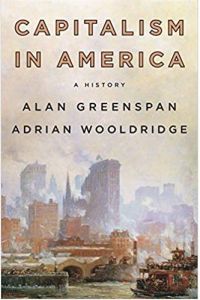Join getAbstract to access the summary!

Join getAbstract to access the summary!
Alan Greenspan and Adrian Wooldridge
Capitalism in America
A History
Penguin Press, 2018
What's inside?
What’s ailing America? Too many entitlements and too much regulation, according to this book.
Recommendation
Boom, bust, repeat. The history of the American economy is a rollercoaster of ups and downs, but the United States remains a great power because its expansionary periods have proven robust enough to overwhelm the regular – sometimes wrenching – downturns. In this trenchant overview of US capitalism, former Federal Reserve head Alan Greenspan and journalist Adrian Wooldridge lay out America’s evolution from fiscal backwater to economic titan. With sharp prose, they explain what has driven three centuries of (mostly) financial progress and offer a diagnosis on what’s keeping 21st-century growth muted. Considering Greenspan’s purposefully obfuscatory speeches as Fed chair, readers will find this book’s crisp language and clear message a welcome change.
Summary
About the Authors
Alan Greenspan was chair of the Federal Reserve from 1987 to 2006. Adrian Wooldridge, the Economist‘s political editor, writes the magazine’s Bagehot column.





















Comment on this summary